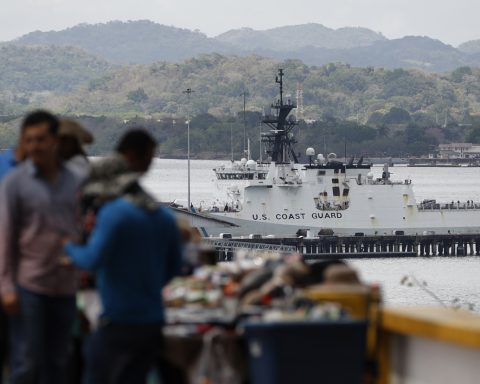It is common to hear that the Dominican Republic receives tourists from all over the world, mainly from those European nations such as Ukraine, Russia, Switzerland, Poland and Belgium, as well as from North American countries such as the United States.
However, travelers from Colombia also visit this side of the island, not only to take selfies and taste the exquisite local cuisine, but also to learn the national history.
Yesterday elCaribe captured the moment in which several Colombian families enjoyed a tour in the Colonial Zone that included a first visit to the Puerta de San Diego or Puerta de la Mar as it is historically known in honor of the infant Don Diego Colón.
attractions
Visitors longed to see this entrance, which is the only one of three walls that gave entrance to the city, since it is decorated with plateresque architectural details, that is, in the style of Isabel, the Catholic Monarchs and Prince Felipe.
On this route, a tour guide accompanied them and explained the history of this site in a precise, slow and polite way, while guiding them along the way about the importance of this monument and the founder of the Dominican homeland Juan Pablo Duarte, whose statue was raised in that space that has a metal plate indented with the following information: “Plaza Patriótica Juan Pablo Duarte 1813-1876”.
This entrance is located next to the Viceroyalty Palace of Don Diego Colón or as it is popularly known “Alcázar de Colón”.
Few Dominicans still remember that this was the main entrance to the Colonial City from the Caribbean Sea and dates back to 1549, that is, 473 years.
The design of this wall was made by the 16th century Spanish architect Rodrigo de Liendo.
That wall is more than four hundred years old and has deteriorated over the years. However, it was rebuilt after the construction of the avenue of the current Puerto Francisco Alberto Caamaño Deñó.
The Europeans
A group of European foreigners was also attracted by this entrance, which is emblazoned with the coat of arms of the city of Santo Domingo, as well as that of the king and that of the island.
Impressed by the design that is still preserved, visitors stopped to view every detail and later photograph them for posterity.
Other iconic places in the Colonial Zone
The World Tourism Organization (UNWTO) granted a recognition to the Dominican Republic a month and 10 days ago as the number one country in the world in the recovery of tourism.
In the Colonial Zone there are countless cultural treasures waiting to be visited by tourists and locals alike. Many of these correspond to places, streets and trees related to the colonial history of the island.
Such is the case of Santa María de la Encarnación Cathedral, the San Francisco Monastery known as Las Ruinas, Las Damas Street and El Conde Street, as well as the Ceiba, a tree that Christopher Columbus used where he allegedly moored his caravels in the first trip he made on December 5, 1492.

















